Zaragoza is the capital and largest city of Aragon in Spain, and one of Spain's five largest cities, but it is one of the least known outside of Spain. Founded on the river Ebro in times of the Roman Empire as Cesaraugusta, Zaragoza now holds a large cultural and architectural heritage attesting to 2,000 years of affluence and importance. The city is most known for its Basilica del Pilar, built to venerate the apparition of Virgin Mary to Saint James in earliest Christian times, which became a major cultural identity fixture of Christian Spain. The city was again put on a global map by the 2008 Expo, which left it with a whole new modern part developed further for various purposes after the exhibition closed.
Strategically located between Madrid and Barcelona on a high-speed railway line, Zaragoza enjoys relative economic affluence yet, due to its low profile, remains often overlooked by tourists and thus prices, such as for accommodation, remain much lower than in either of Spain's most famous cities. Therefore, it makes for a great stop along your way, or even a destination in its own right.
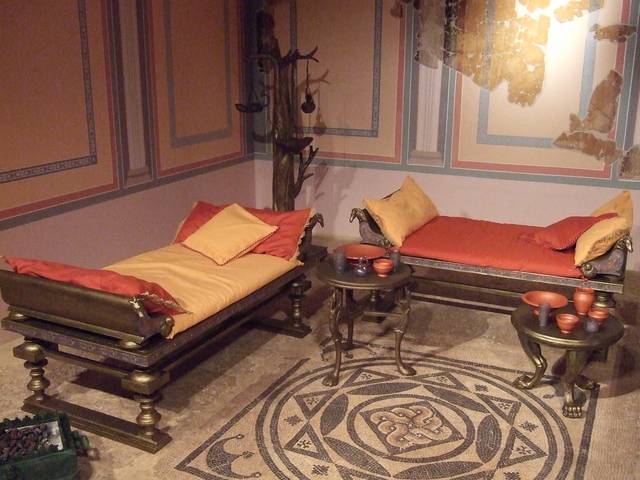
The city on the Ebro river was founded at the turn of the millennium by the Roman Emperor Augustus, and named after him as Caesaraugusta. 2,000 years later, the architectural remains of large public buildings indicate Caesar Augustus’ influence over the city. Today you can still admire the city’s Forum, Thermal Baths, the River Port or the Great Theatre, archeological remains which reflect the splendour of the city as it was during the Roman Empire. It was on the banks of the river Ebro that Saint James (called Santiago in Spanish) reportedly saw the apparition of Virgin Mary on the pillar, which is seen as the pivotal moment in the foundation of the Spanish Christian heritage.
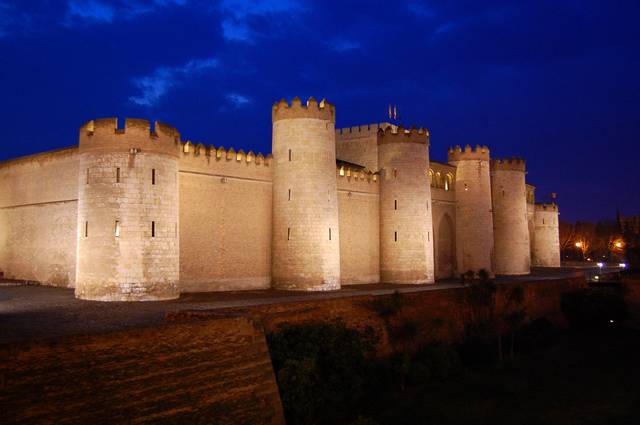 After the fall of the empire, the city and the rest of today's Spain, was conquered by the Goths and then by the Moors. Zaragoza, was the northernmost stronghold of the Moorish caliphate, and then emerged as a capital of its own kingdom, or Taifa. The founding of the Taifa in the 11th century was marked by the construction of the Aljafeira Palace, which remains one of few relatively intact monuments from that era. Despite being often on the front line, Zaragoza continued to develop as a major art and science centre.
After the fall of the empire, the city and the rest of today's Spain, was conquered by the Goths and then by the Moors. Zaragoza, was the northernmost stronghold of the Moorish caliphate, and then emerged as a capital of its own kingdom, or Taifa. The founding of the Taifa in the 11th century was marked by the construction of the Aljafeira Palace, which remains one of few relatively intact monuments from that era. Despite being often on the front line, Zaragoza continued to develop as a major art and science centre.
-PlYnV.medium.jpg) As Zaragoza was regained by the Christian kings of Aragon, the development continued and the relative tolerance which Christians enjoyed under the Muslim rule was extended to the Moors initially. The Moorish artistic and architectural tradition was incorporated into the local architectural style called Mudéjar, of which many examples survive in Zaragoza. Under Christian rule, Zaragoza's two cathedrals, the original La seo and the Basilica del Pilar, were constructed to venerate the Virgin Mary apparition. The city's importance and affluence in the subsequent ages is reflected in its rich architectural heritage and many improvements given to its most important buildings, which gives them a number of layers of appeal.
As Zaragoza was regained by the Christian kings of Aragon, the development continued and the relative tolerance which Christians enjoyed under the Muslim rule was extended to the Moors initially. The Moorish artistic and architectural tradition was incorporated into the local architectural style called Mudéjar, of which many examples survive in Zaragoza. Under Christian rule, Zaragoza's two cathedrals, the original La seo and the Basilica del Pilar, were constructed to venerate the Virgin Mary apparition. The city's importance and affluence in the subsequent ages is reflected in its rich architectural heritage and many improvements given to its most important buildings, which gives them a number of layers of appeal.
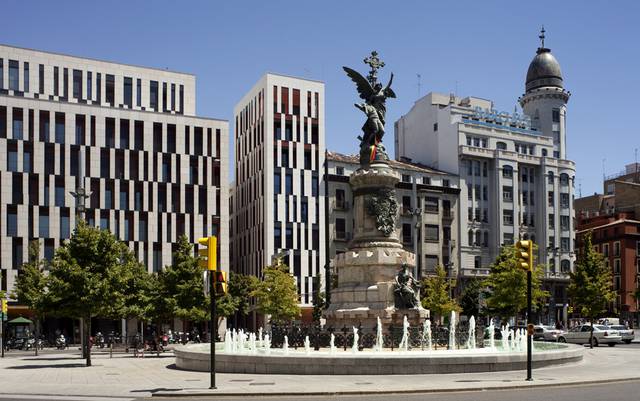 Zaragoza has retained relative affluence by becoming a major industrial hub, with factories spread over several industrial parks around the city, and a big logistics hub (named PLAZA, or Plataforma Logística de Zaragoza), taking advantage of its strategic location on the railway line between Madrid and Barcelona and its airport, focusing on freight. The Expo 2008 universal exhibition held in the city resulted in massive development of its western outskirts into exhibition grounds, which have been repurposed for business, civic services and public recreation grounds.
Zaragoza has retained relative affluence by becoming a major industrial hub, with factories spread over several industrial parks around the city, and a big logistics hub (named PLAZA, or Plataforma Logística de Zaragoza), taking advantage of its strategic location on the railway line between Madrid and Barcelona and its airport, focusing on freight. The Expo 2008 universal exhibition held in the city resulted in massive development of its western outskirts into exhibition grounds, which have been repurposed for business, civic services and public recreation grounds.
Zaragoza has a Continental Mediterranean climate, very dry, with cold winters and hot summers. With an average of 318 mm per year, rainfall is a rarity mostly occurring in spring. There is drought in summer with only a few storms in the late afternoon. In July and August temperatures are typically above 30°C (86°F), reaching up to 40°C (104°F) a few days per year. On those days you will quickly pick the idea of siesta: hiding away after lunch, during the hottest part of the day, to enjoy later the evenings and nights at a delightful 18-22°C.
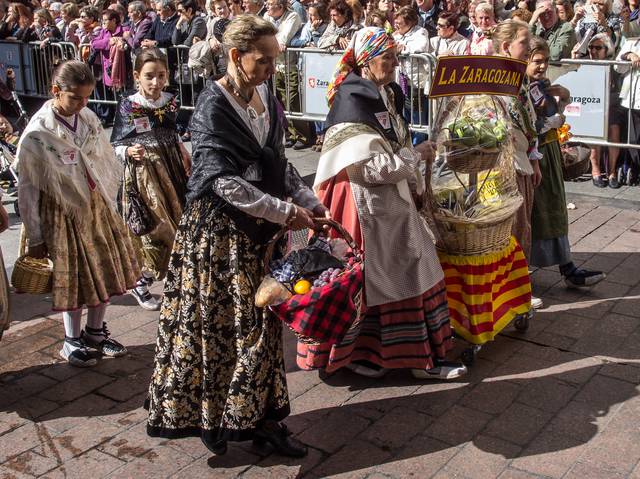 In winter the temperatures are low, usually between 0 and 10°C (32-50°F), with some frosts during the night. Snow only shows up once every couple of years but fog is not uncommon (about 20 days from November to January). However, the only bad part is the Cierzo, a cold and dry wind blowing from the NW that is quite common on clear days, and can make your stay really unpleasant. Beware also of sunny days in spring and autumn, if the Cierzo blows, you will regret not having warm clothes with you.
In winter the temperatures are low, usually between 0 and 10°C (32-50°F), with some frosts during the night. Snow only shows up once every couple of years but fog is not uncommon (about 20 days from November to January). However, the only bad part is the Cierzo, a cold and dry wind blowing from the NW that is quite common on clear days, and can make your stay really unpleasant. Beware also of sunny days in spring and autumn, if the Cierzo blows, you will regret not having warm clothes with you.
Detailed weather forecasts including wind speed can be found in
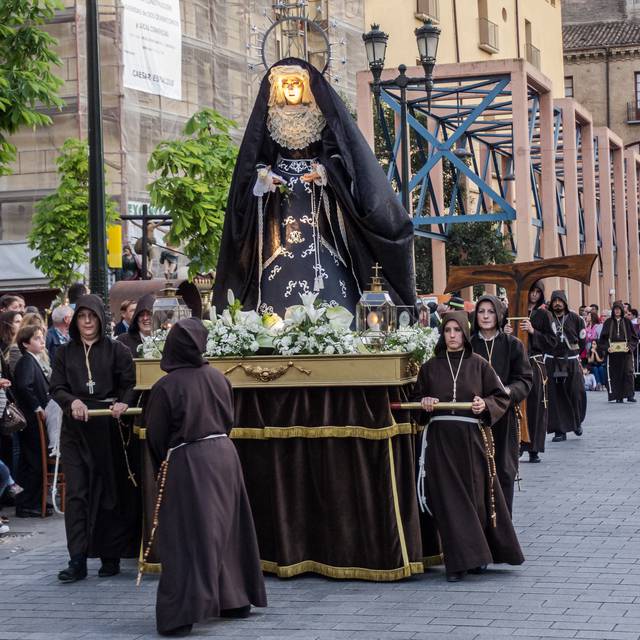 The best time to visit Zaragoza is during spring (April to mid-June) and autumn (Sept-Oct). In late June and July the days can be quite hot but in the evenings the city is bustling with people going out for dinner or having a beer with friends in a terrace. In August the city is almost deserted, with most people being on holidays at the mountains or the coast, and more that half the bars, restaurants and small business closed.
The best time to visit Zaragoza is during spring (April to mid-June) and autumn (Sept-Oct). In late June and July the days can be quite hot but in the evenings the city is bustling with people going out for dinner or having a beer with friends in a terrace. In August the city is almost deserted, with most people being on holidays at the mountains or the coast, and more that half the bars, restaurants and small business closed.
The major city festival is El Pilar that takes place every year the week of the 12th of October, with lots of concerts, performances and street animations. It is also the best time to see a bullfight in Zaragoza.
The Easter week, although not in the same league that the Andalucia or Calanda counterparts, is very scenic, with several processions going over the city centre every day with their dramatic sculptures, black-dressed praying women and hundreds of hooded people playing drums. It is a Spain's since 2014.
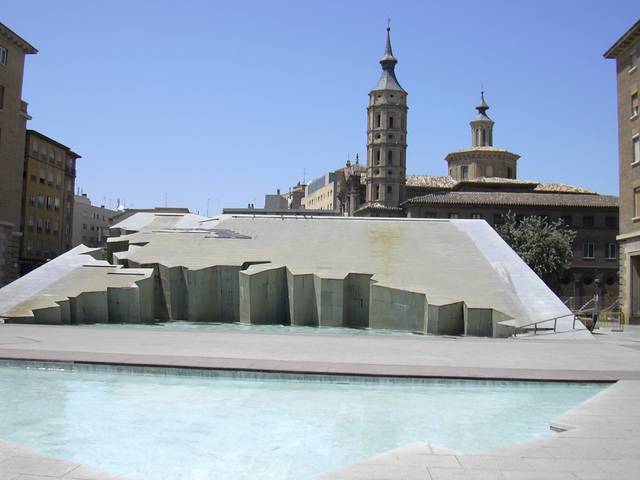 Plaza del Pilar is the main square, just south of the River Ebro. On the square are the two cathedrals and the "Fuente de la Hispanidad", a fountain and sculpture representing Columbus' discovery of the New World. The tourist office is here as well.
Plaza del Pilar is the main square, just south of the River Ebro. On the square are the two cathedrals and the "Fuente de la Hispanidad", a fountain and sculpture representing Columbus' discovery of the New World. The tourist office is here as well.
-TuZuT.medium.jpg)
- Cathedral-Basilica of Our Lady of the Pillar. The more famous of the two cathedrals is the one on the bank of the river Ebro. Holding an additional rank of basilica, this cathedral venerates the Virgin Mary who reportedly appeared to Saint James the Apostle on said riverbank during his travels in Iberia. Mary appeared on a pillar, which led to her being venerated under this particular name and also gave origin to the unusual Spanish female given name Pilar.
Saint James is believed to have had a small shrine constructed by the pillar, of which nothing remains, but subsequently a large basilica was built on the site in the 3rd century under the rule of the Roman Emperor Constantine. This basilica has been rebuilt over the years, and became a Gothic church in the 15th century. The present-day version of the church superseded it and was constructed on the orders of King Charles II of Spain between 1681 and 1872. The protracted construction has been caused by frequent redesigns, including a reorientation, additions of towers and cupolas. It also allowed for the domes to be painted by Francisco Goya a century after the construction started, and the vault paintings are now one of the main attractions on the inside of the cathedral.
-yXgOI.medium.jpg)
- Cathedral of the Savior of Zaragoza. summer: 10:00-21:00, winter: 10:00-18:30. Located on the Plaza de la Seo, the cathedral is referred to as la seo ("the see") to distinguish it from the other cathedral, el pilar. La Seo has originally been constructed one the site one of the first mosques during the Moorish domination of Aragon, built perhaps as early as the 8th century, and destroyed to make way for a romanesque church in the 12th century. Zaragoza became an independent diocese in the 14th century and the church became its cathedral, immediately being afforded renovations in the gothic and moorish (mudéjar) styles. Many other reconstructions followed, due to both changing tastes and architectural necessities, as parts of the cheaply-built cathedral began to fail over time, including the collapse of the its in the 15th century.
In the 17th century, the church has been involved in a canon law battle with the newly-reconstructed Basilica of Our Lady on the Pillar over which should be the seat of the diocese and thus the cathedral, which finally saw Pope Clement X declare them joint cathedrals with special provisions to make sure both enjoy equal status. La Seo is now a mixture of styles spanning between 12th and 19th centuries, and features an exquisite collection of tapestries. Entrance closes sometimes during the day when there's mass. €4. - Iglesias Mudejares. Mudejar is a style that mixes Christian and Muslim tradition. Good examples of that are a part of La Seo cathedral, Magdalena church, San Miguel church and San Pablo church.
- Iglesia de Santa María Magdalena. Distinctive for its square tower and polygonal apse, la Magdalena stands out within the old town of Zaragoza as one of the few relatively intact examples of Mudéjar architecture of the 14th century. That said, its interior was renovated in the baroque period.
- Iglesia de San Miguel de los Navarros. Another example of Mudéjar architecture, with a square tower and polygonal apse reminiscent of that of la Magdalena. It retained a richly-gilded Renaissance high altar by Damian Forment, but its tower did not escape a baroque intervention in the form of a spire.
- Iglesia de San Pablo, Calle de San Pablo 42. The third Mudéjar church features a gothic portal and another altar by Damián Forment, as well as an pyramid-spired octogonal tower, whose shape is echoed by two lanters flanking the portal.
- Basílica of Santa Engracia.
Cathedral-Basilica of Our Lady of the Pillar. The more famous of the two cathedrals is the one on the bank of the river Ebro. Holding an additional rank of basilica, this cathedral venerates the Virgin Mary who reportedly appeared to Saint James the Apostle on said riverbank during his travels in Iberia. Mary appeared on a pillar, which led to her being venerated under this particular name and also gave origin to the unusual Spanish female given name Pilar.
Saint James is believed to have had a small shrine constructed by the pillar, of which nothing remains, but subsequently a large basilica was built on the site in the 3rd century under the rule of the Roman Emperor Constantine. This basilica has been rebuilt over the years, and became a Gothic church in the 15th century. The present-day version of the church superseded it and was constructed on the orders of King Charles II of Spain between 1681 and 1872. The protracted construction has been caused by frequent redesigns, including a reorientation, additions of towers and cupolas. It also allowed for the domes to be painted by Francisco Goya a century after the construction started, and the vault paintings are now one of the main attractions on the inside of the cathedral.
Cathedral of the Savior of Zaragoza. summer: 10:00-21:00, winter: 10:00-18:30. Located on the Plaza de la Seo, the cathedral is referred to as la seo ("the see") to distinguish it from the other cathedral, el pilar. La Seo has originally been constructed one the site one of the first mosques during the Moorish domination of Aragon, built perhaps as early as the 8th century, and destroyed to make way for a romanesque church in the 12th century. Zaragoza became an independent diocese in the 14th century and the church became its cathedral, immediately being afforded renovations in the gothic and moorish (mudéjar) styles. Many other reconstructions followed, due to both changing tastes and architectural necessities, as parts of the cheaply-built cathedral began to fail over time, including the collapse of the its in the 15th century.
In the 17th century, the church has been involved in a canon law battle with the newly-reconstructed Basilica of Our Lady on the Pillar over which should be the seat of the diocese and thus the cathedral, which finally saw Pope Clement X declare them joint cathedrals with special provisions to make sure both enjoy equal status. La Seo is now a mixture of styles spanning between 12th and 19th centuries, and features an exquisite collection of tapestries. Entrance closes sometimes during the day when there's mass. €4.
Iglesias Mudejares. Mudejar is a style that mixes Christian and Muslim tradition. Good examples of that are a part of La Seo cathedral, Magdalena church, San Miguel church and San Pablo church.
- Iglesia de Santa María Magdalena. Distinctive for its square tower and polygonal apse, la Magdalena stands out within the old town of Zaragoza as one of the few relatively intact examples of Mudéjar architecture of the 14th century. That said, its interior was renovated in the baroque period.
- Iglesia de San Miguel de los Navarros. Another example of Mudéjar architecture, with a square tower and polygonal apse reminiscent of that of la Magdalena. It retained a richly-gilded Renaissance high altar by Damian Forment, but its tower did not escape a baroque intervention in the form of a spire.
- Iglesia de San Pablo, Calle de San Pablo 42. The third Mudéjar church features a gothic portal and another altar by Damián Forment, as well as an pyramid-spired octogonal tower, whose shape is echoed by two lanters flanking the portal.
Iglesias Mudejares. Mudejar is a style that mixes Christian and Muslim tradition. Good examples of that are a part of La Seo cathedral, Magdalena church, San Miguel church and San Pablo church.
- Iglesia de Santa María Magdalena. Distinctive for its square tower and polygonal apse, la Magdalena stands out within the old town of Zaragoza as one of the few relatively intact examples of Mudéjar architecture of the 14th century. That said, its interior was renovated in the baroque period.
- Iglesia de San Miguel de los Navarros. Another example of Mudéjar architecture, with a square tower and polygonal apse reminiscent of that of la Magdalena. It retained a richly-gilded Renaissance high altar by Damian Forment, but its tower did not escape a baroque intervention in the form of a spire.
- Iglesia de San Pablo, Calle de San Pablo 42. The third Mudéjar church features a gothic portal and another altar by Damián Forment, as well as an pyramid-spired octogonal tower, whose shape is echoed by two lanters flanking the portal.
Iglesias Mudejares. Mudejar is a style that mixes Christian and Muslim tradition. Good examples of that are a part of La Seo cathedral, Magdalena church, San Miguel church and San Pablo church.
- Iglesia de Santa María Magdalena. Distinctive for its square tower and polygonal apse, la Magdalena stands out within the old town of Zaragoza as one of the few relatively intact examples of Mudéjar architecture of the 14th century. That said, its interior was renovated in the baroque period.
- Iglesia de San Miguel de los Navarros. Another example of Mudéjar architecture, with a square tower and polygonal apse reminiscent of that of la Magdalena. It retained a richly-gilded Renaissance high altar by Damian Forment, but its tower did not escape a baroque intervention in the form of a spire.
- Iglesia de San Pablo, Calle de San Pablo 42. The third Mudéjar church features a gothic portal and another altar by Damián Forment, as well as an pyramid-spired octogonal tower, whose shape is echoed by two lanters flanking the portal.
Iglesias Mudejares. Mudejar is a style that mixes Christian and Muslim tradition. Good examples of that are a part of La Seo cathedral, Magdalena church, San Miguel church and San Pablo church.
- Iglesia de Santa María Magdalena. Distinctive for its square tower and polygonal apse, la Magdalena stands out within the old town of Zaragoza as one of the few relatively intact examples of Mudéjar architecture of the 14th century. That said, its interior was renovated in the baroque period.
- Iglesia de San Miguel de los Navarros. Another example of Mudéjar architecture, with a square tower and polygonal apse reminiscent of that of la Magdalena. It retained a richly-gilded Renaissance high altar by Damian Forment, but its tower did not escape a baroque intervention in the form of a spire.
- Iglesia de San Pablo, Calle de San Pablo 42. The third Mudéjar church features a gothic portal and another altar by Damián Forment, as well as an pyramid-spired octogonal tower, whose shape is echoed by two lanters flanking the portal.
Basílica of Santa Engracia.
- Palacio de la Aljaferia. Check website as opening hours vary during the year.. A Moorish castle with intricate decorations including ceilings of gold. The castle now houses the Aragon regional parliament. €5 or free with Tourist Card.
- Las Murallas. Parts of the ancient wall that surrounded the city are still standing.
Palacio de la Aljaferia. Check website as opening hours vary during the year.. A Moorish castle with intricate decorations including ceilings of gold. The castle now houses the Aragon regional parliament. €5 or free with Tourist Card.
Las Murallas. Parts of the ancient wall that surrounded the city are still standing.
- Caesaraugusta route. A route of 4 museums with a joint ticket is available in better price than separately. The route exposes monuments from times of Caesar August (I century B.C.):
- Port.
- Forum.
- Baths.
- Theatre.
- Museo de Zaragoza, Plaza de los Sitios 6. The municipal museum is free and is very much worth a visit for its impressive mosaics from Caesaraugusta and for its celebrated collection of Goya.
- Museo Goya, +34 976 397 387. Museum displaying a collection of Goya and temporary exhibitions. €4 adults, free for concessions, free with Tourist Card.
- Educational Museum of Origami in Zaragoza, Centro de Historias, +34 876 03 45 69. A gallery devoted to the craft of origami within the Centro de Historias. €3 or free with Tourist Card.
Caesaraugusta route. A route of 4 museums with a joint ticket is available in better price than separately. The route exposes monuments from times of Caesar August (I century B.C.):
- Port.
- Forum.
- Baths.
- Theatre.
Caesaraugusta route. A route of 4 museums with a joint ticket is available in better price than separately. The route exposes monuments from times of Caesar August (I century B.C.):
- Port.
- Forum.
- Baths.
- Theatre.
Caesaraugusta route. A route of 4 museums with a joint ticket is available in better price than separately. The route exposes monuments from times of Caesar August (I century B.C.):
- Port.
- Forum.
- Baths.
- Theatre.
Caesaraugusta route. A route of 4 museums with a joint ticket is available in better price than separately. The route exposes monuments from times of Caesar August (I century B.C.):
- Port.
- Forum.
- Baths.
- Theatre.
Caesaraugusta route. A route of 4 museums with a joint ticket is available in better price than separately. The route exposes monuments from times of Caesar August (I century B.C.):
- Port.
- Forum.
- Baths.
- Theatre.
Museo de Zaragoza, Plaza de los Sitios 6. The municipal museum is free and is very much worth a visit for its impressive mosaics from Caesaraugusta and for its celebrated collection of Goya.
Museo Goya, +34 976 397 387. Museum displaying a collection of Goya and temporary exhibitions. €4 adults, free for concessions, free with Tourist Card.
Educational Museum of Origami in Zaragoza, Centro de Historias, +34 876 03 45 69. A gallery devoted to the craft of origami within the Centro de Historias. €3 or free with Tourist Card.
- Expo 2008. In 2008 Zaragoza hosted an international expo for which a new area was opened with many new buildings designed by famous architects such as Zaha Hadid. It is now possible to stroll around this area. The only facility open to tourists is the aquarium.
- River Aquarium.
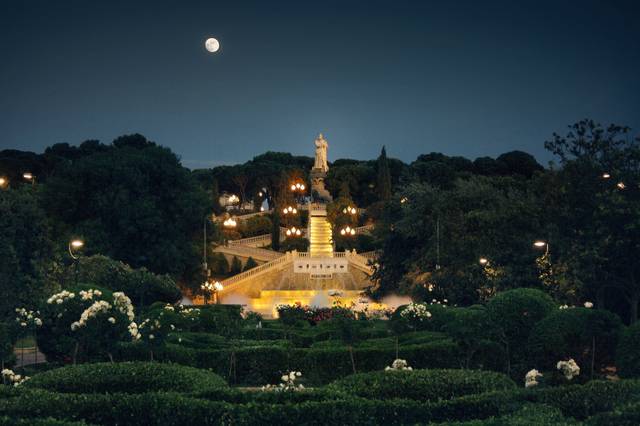
Expo 2008. In 2008 Zaragoza hosted an international expo for which a new area was opened with many new buildings designed by famous architects such as Zaha Hadid. It is now possible to stroll around this area. The only facility open to tourists is the aquarium.
River Aquarium.
- Parque Grande José Antonio Labordeta. A vast city park from 1929 with impressive features, arrangements and a monumental fountain staircase. Originally named after the dictator Miguel Primo de Rivera, it was renamed in 2008 following the death of the prominent Aragonese singer-songwriter, activist and politician José Antonio Labordeta. The city's Botanical Gardens are included within the park's grounds.
- Puerta del Carmen. A surviving example of what once were 12 entry gates to the walled city of Zaragoza. The gate looks ancient, but was actually built in 1789 in neoclassical style, hence its resemblance to Roman ruins. The gate's dishevelled appearance documents its role in several sieges of the city and this is why the gate was not restored to its original glory - although minor repairs were carried out in 1997, when a bus collided with it
- Puente de Piedra. The central bridge of Zaragoza, built in the 15th century and reconstructed many times afterwards to repair flood damage and reinforce the construction. Today it is restricted almost entirely to pedestrian traffic and features four pillars at its ends with lions, symbols of Zaragoza.
Parque Grande José Antonio Labordeta. A vast city park from 1929 with impressive features, arrangements and a monumental fountain staircase. Originally named after the dictator Miguel Primo de Rivera, it was renamed in 2008 following the death of the prominent Aragonese singer-songwriter, activist and politician José Antonio Labordeta. The city's Botanical Gardens are included within the park's grounds.
Puerta del Carmen. A surviving example of what once were 12 entry gates to the walled city of Zaragoza. The gate looks ancient, but was actually built in 1789 in neoclassical style, hence its resemblance to Roman ruins. The gate's dishevelled appearance documents its role in several sieges of the city and this is why the gate was not restored to its original glory - although minor repairs were carried out in 1997, when a bus collided with it
Puente de Piedra. The central bridge of Zaragoza, built in the 15th century and reconstructed many times afterwards to repair flood damage and reinforce the construction. Today it is restricted almost entirely to pedestrian traffic and features four pillars at its ends with lions, symbols of Zaragoza.
You can buy a Zaragoza Card, a prepaid product for tourists visiting Zaragoza that combine many of the services tourists are likely to use in a prepaid package. You can buy cards valid over 24hr (€20) or 48hr (€23) online or at the tourist office. The card includes:
- Free entry to major museums and monuments.
- 24 hour unlimited use of the Tourist Bus.
- Prepaid public transportation (5 trips with the 24-hr card, 7 trips with the 48-hr card).
- Including guided tours and the services of the “roaming” tourist guides.
- One free drink and tapa in selected bars.
- The Parque Grande is excellent for a walk or a chill. Huge in size, you forget the city, and the many fountains adds to distraction.
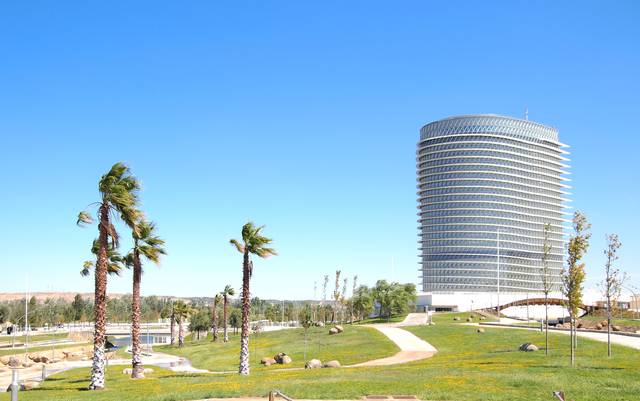
Summer days can be very hot in Zaragoza. If you prefer relaxing by the swimming pool over a sightseeing program, here are a few suggestions. Public swimming pools in Zaragoza are generally clean and well maintained. The entrance fee is some €3 for an adult. Open-air pools are open until 9 or 22:00 in the evening.
- Centro Deportivo Municipal Actur, C/ Pablo Ruiz Picasso s/n (near Avenida de los Pirineos. Several swimming pools, large lawn area. Few trees, hard to find a place in the shadow.
- Centro Deportivo Municipal Salduba, Paseo de Mairano Renovales s/n (Part of Parque Primo de Rivera between Calle de Manuel Lasala and Paseo de San Sebastián. 50-m pool, the right place for serious swimming.
- Palacio Municipal de Deportes, Calle de Luis Bermejo. Small pool, plenty of trees for shadow.
-FLvlj.medium.jpg)
Centro Deportivo Municipal Actur, C/ Pablo Ruiz Picasso s/n (near Avenida de los Pirineos. Several swimming pools, large lawn area. Few trees, hard to find a place in the shadow.
Centro Deportivo Municipal Salduba, Paseo de Mairano Renovales s/n (Part of Parque Primo de Rivera between Calle de Manuel Lasala and Paseo de San Sebastián. 50-m pool, the right place for serious swimming.
Palacio Municipal de Deportes, Calle de Luis Bermejo. Small pool, plenty of trees for shadow.
Zaragoza has much to offer in the way of shopping, with most central streets being lined with shopping opportunities. Shopping area stretches from Residencial Paraiso in Sagasta to the Plaza de España. The most exclusive shops are on Francisco de Vitoria, San Ignacio de Loyola, Cadiz, Isaac Peral and the streets crossing them. Craft and souvenir shops are located in the Jaime I and Alfonso I streets, starting in the Pilar Place, and at Anticuarios de la Plaza de San Bruno, where Sunday mornings a small flea market takes place.
- El Corte Inglés. The iconic Spanish department store chain has its outlet in Zaragoza on Paseo de la Independencia close to Plaza de España
- Aragonia. A modern multi-functional centre in the southern district of Romareda.
- Centro Comercial Augusta, Avenida De Navarra 180 (next to Delicias train station. Shops, restaurants, cinema and free Wi-Fi access in a centre behind the Delicias station.
- GranCasa, Calle de la Poetisa María Zambrano, 35. Shopping mall where you can find everything including shops, restaurants a bowling alley and cinemas.
-xUunl.medium.jpg)
El Corte Inglés. The iconic Spanish department store chain has its outlet in Zaragoza on Paseo de la Independencia close to Plaza de España
Aragonia. A modern multi-functional centre in the southern district of Romareda.
Centro Comercial Augusta, Avenida De Navarra 180 (next to Delicias train station. Shops, restaurants, cinema and free Wi-Fi access in a centre behind the Delicias station.
GranCasa, Calle de la Poetisa María Zambrano, 35. Shopping mall where you can find everything including shops, restaurants a bowling alley and cinemas.
- Mercado Central. On a site which has been a market place since the Middle Ages. It is the perfect place to buy Zaragozan products as well as observe the atmosphere of a traditional Spanish market. Go there if you are looking for food and fresh produce
- Plaza de Toros de la Misericordia, Calle Vicente Gómez Salvo, 58. The place to go on Sunday as it is the venue for the traditional flea market
- Rastro de Zaragoza. Largest open-air market
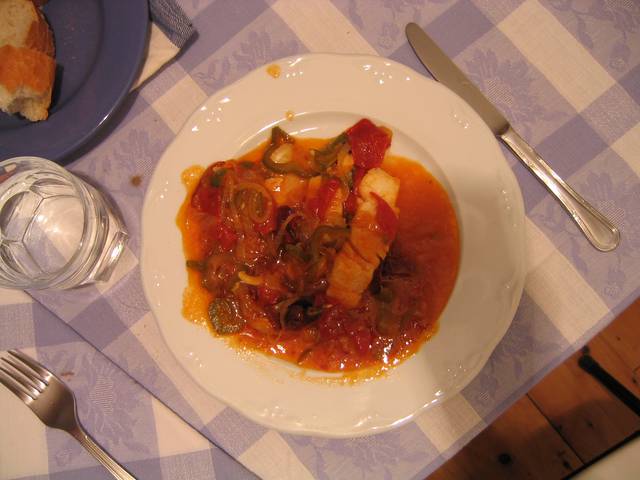
Mercado Central. On a site which has been a market place since the Middle Ages. It is the perfect place to buy Zaragozan products as well as observe the atmosphere of a traditional Spanish market. Go there if you are looking for food and fresh produce
Plaza de Toros de la Misericordia, Calle Vicente Gómez Salvo, 58. The place to go on Sunday as it is the venue for the traditional flea market
Rastro de Zaragoza. Largest open-air market
Some of the best known regional specialities are:
- Bacalao al Ajoarriero, cod-fish with garlic and eggs,
- Huevos al Salmorejo, eggs with cold tomato cream,
- Longanizas y Chorizos, highly appreciated kinds of sausages,
- Ternasco Asado, roasted young lamb,
- Pollo al Chilindrón, chicken in a sauce of cured ham, tomatoes, onions and paprika,
- Cordero a la Pastora, lamb Shepherd's style,
- Lomo de Cerdo a la Zaragozana, cutlet,
- Migas a la Aragonesa, a dish made of crumbs scrambled with an egg and chorizo,
- Huevos rotos con foie, scrambled eggs with foie gras, often served with roasted potatoes and slices of smoked ham (jamon)
- Borrajas is a vegetable which can only be found in Aragon. It is usually eaten with olive oil,
- Melocotón con vino, peaches in wine, is a good option for dessert, though sometimes it is hard to find a restaurant serving this.
-oIfGa.medium.jpg)
Bacalao al Ajoarriero, cod-fish with garlic and eggs,
Huevos al Salmorejo, eggs with cold tomato cream,
Longanizas y Chorizos, highly appreciated kinds of sausages,
Ternasco Asado, roasted young lamb,
Pollo al Chilindrón, chicken in a sauce of cured ham, tomatoes, onions and paprika,
Cordero a la Pastora, lamb Shepherd's style,
Lomo de Cerdo a la Zaragozana, cutlet,
Migas a la Aragonesa, a dish made of crumbs scrambled with an egg and chorizo,
Huevos rotos con foie, scrambled eggs with foie gras, often served with roasted potatoes and slices of smoked ham (jamon)
Borrajas is a vegetable which can only be found in Aragon. It is usually eaten with olive oil,
Melocotón con vino, peaches in wine, is a good option for dessert, though sometimes it is hard to find a restaurant serving this.
Zaragoza is well known because of its many tapas bars. A "Tabla" is a wooden plate in which different tapas like cheese and sausages are served, often with a bottle of wine in the price. The best place to get tapas is Puerta Cinegia and the adjacent "El Tubo"., a group of narrow streets overflowing with small bars and restaurants.
- Casa Lac, Calle de los mártires 12. M-Sa 01:00-16:00, 20:00-00:00; Su 12:30-17:00. An excellent choice for higher-end tapas
- Taberna de Doña Casta, Calle Estébanes, 6. Known for croquetas
- Gran Taberna Tragantua, Plaza Santa Marta. A little bit more expensive but the food is of high quality.
- Casa de Mar, Calle San Andrés, 9. A four-person meal with two bottles of wine costs less than €12 each..
- Los Victorinos, C/José de la Hera, 6 (alley off Calle Don Jaime I. One of the best tapas bars in town (although surely not the cheapest!) Try the Boletus Edulis tapa.
- Palomeque, C/. Palomeque, +34 976 214082. A classier, unusual take on a tapas bar, but not overpriced compared to some of the other "high-end tapas".It is advisable to call ahead, as this is a very popular restaurant. €10-€20 per person.
-RDVgR.medium.jpg)
Zaragoza is well known because of its many tapas bars. A "Tabla" is a wooden plate in which different tapas like cheese and sausages are served, often with a bottle of wine in the price. The best place to get tapas is Puerta Cinegia and the adjacent "El Tubo"., a group of narrow streets overflowing with small bars and restaurants.
Casa Lac, Calle de los mártires 12. M-Sa 01:00-16:00, 20:00-00:00; Su 12:30-17:00. An excellent choice for higher-end tapas
Taberna de Doña Casta, Calle Estébanes, 6. Known for croquetas
Gran Taberna Tragantua, Plaza Santa Marta. A little bit more expensive but the food is of high quality.
Casa de Mar, Calle San Andrés, 9. A four-person meal with two bottles of wine costs less than €12 each..
Los Victorinos, C/José de la Hera, 6 (alley off Calle Don Jaime I. One of the best tapas bars in town (although surely not the cheapest!) Try the Boletus Edulis tapa.
Palomeque, C/. Palomeque, +34 976 214082. A classier, unusual take on a tapas bar, but not overpriced compared to some of the other "high-end tapas".It is advisable to call ahead, as this is a very popular restaurant. €10-€20 per person.
- Taberna La Piedra, Cortes de Aragon, 64. Delicious if a bit pricey. The Piedras and Solomillos are highly recommended. Great for beef lovers or lovers of very traditional Spanish food. €50 per person.
- La Tertulia Taurina, C/ Pignatelli 122. Traditional Castilian-Aragonese cuisine restaurant in the old part of the city. Slow Food with great selection of meats. Menu of the day €12 (local wine and desserts included) or à la carte for around €36.
- Heladería Tortosa, Calle Don Jaime I, 35 (the street in front of the Seo Cathedral, away from the river, +34 976 292 600. 11:00-00:30. One of the oldest ice cream shops in Zaragoza, established in 1934. Offer high quality Italian-style ice cream, and horchata de chufa.
- Helados Italianos Aldo, Calle Don Jaime I. Very good ice cream shop.
-unkZn.medium.jpg)
Taberna La Piedra, Cortes de Aragon, 64. Delicious if a bit pricey. The Piedras and Solomillos are highly recommended. Great for beef lovers or lovers of very traditional Spanish food. €50 per person.
La Tertulia Taurina, C/ Pignatelli 122. Traditional Castilian-Aragonese cuisine restaurant in the old part of the city. Slow Food with great selection of meats. Menu of the day €12 (local wine and desserts included) or à la carte for around €36.
Heladería Tortosa, Calle Don Jaime I, 35 (the street in front of the Seo Cathedral, away from the river, +34 976 292 600. 11:00-00:30. One of the oldest ice cream shops in Zaragoza, established in 1934. Offer high quality Italian-style ice cream, and horchata de chufa.
Helados Italianos Aldo, Calle Don Jaime I. Very good ice cream shop.
_(9251383790)-pCIFx.medium.jpg) There is a number of good wines produced in Aragon.
There is a number of good wines produced in Aragon.
Tareas of Calle de Espoz y Mina and Calle Mayor, which are a stone's throw from Plaza del Pilar, have plenty of varied bars from which to choose.
- Cafe Praga, Plaza de la Santa Cruz 13, El Tubo, +34 976 20 02 51. Great local favorite that has live music playing in the main bar, or you can retreat to the upstairs terrace and enjoy a tasty beverage overlooking the plaza.
- La Cucaracha, Calle del Temple 25, El Tubolla. Laidback and casual student hang out that doesn't really get going until the early hours of the morning.
- Rock and Blues Cafe, Cuatro de Agosto 5-7, El Tubo. Unleash your inner rock god at this long standing favorite, where live music plays throughout the week.
- La Campana de los Perdidos, Prudencio, 7. 21:00-03:00. Enjoy a beer while listening live music, theatre, poetry from Wednesday to Sunday
Cafe Praga, Plaza de la Santa Cruz 13, El Tubo, +34 976 20 02 51. Great local favorite that has live music playing in the main bar, or you can retreat to the upstairs terrace and enjoy a tasty beverage overlooking the plaza.
La Cucaracha, Calle del Temple 25, El Tubolla. Laidback and casual student hang out that doesn't really get going until the early hours of the morning.
Rock and Blues Cafe, Cuatro de Agosto 5-7, El Tubo. Unleash your inner rock god at this long standing favorite, where live music plays throughout the week.
La Campana de los Perdidos, Prudencio, 7. 21:00-03:00. Enjoy a beer while listening live music, theatre, poetry from Wednesday to Sunday
- Madrid and Barcelona are easily reached by car, high speed train or bus.
- The Alsa bus to Madrid stops in Alcalá de Henares, a charming old university town, handy for Madrid airport.
- Monasterio de Piedra- Charming monastery built in 1194 dc surrounded by an amazing park full of waterfalls. 90 minutes by car. Excellent guided tours, a two-hour attraction.
- Fuendetodos- Birthplace of the great painter Franscisco de Goya. 80 minutes by car.
- Moncayo- A fascinating mountain view. 80 minutes by car.
- Monasterio de Rueda- Romanic monastery which belonged to the cirtencens order.
- Monasterio de Veruela- Romanic monastery which belonged to the cirtencens order.
- Aramon- As the Pyrenees are just 2 hours away from Zaragoza, head to the ski slopes there.
- Teruel and Huesca are easily reached by car, train or bus.
The following places are located in the Huesca province, not more than 2 hours by car and in the middle of the Pyrenees. Charming places in the middle of the nature.
- Loarre Castle- One of the best Romanesque castles in Europe, recently the site for Ridley Scott's film, Kingdom of Heaven.
- Ordesa National Park- is particularly spectacular in autumn and decorated with waterfalls.
- Alquezar- A small village situated in the Sierra de Guara National Park.
- Villanueva de Sigena- The Monastery of Santa María de Sigena is located next to the town. Birthplace of Michael Servetus, the discoverer of pulmonary circulation with a museum dedicated to his work.
- Ecce Homo.
Monasterio de Piedra- Charming monastery built in 1194 dc surrounded by an amazing park full of waterfalls. 90 minutes by car. Excellent guided tours, a two-hour attraction.
Fuendetodos- Birthplace of the great painter Franscisco de Goya. 80 minutes by car.
Moncayo- A fascinating mountain view. 80 minutes by car.
Monasterio de Rueda- Romanic monastery which belonged to the cirtencens order.
Monasterio de Veruela- Romanic monastery which belonged to the cirtencens order.
Aramon- As the Pyrenees are just 2 hours away from Zaragoza, head to the ski slopes there.
Loarre Castle- One of the best Romanesque castles in Europe, recently the site for Ridley Scott's film, Kingdom of Heaven.
Ordesa National Park- is particularly spectacular in autumn and decorated with waterfalls.
Alquezar- A small village situated in the Sierra de Guara National Park.
Villanueva de Sigena- The Monastery of Santa María de Sigena is located next to the town. Birthplace of Michael Servetus, the discoverer of pulmonary circulation with a museum dedicated to his work.
Ecce Homo.
